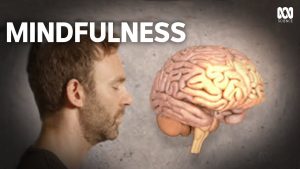
By John M. de Castro, Ph.D.
In today’s Research News article “The impact of meditation on sustained attention in nonclinical population: An extensive review” (See summary below or view the full text of the study at: https://pmc.ncbi.nlm.nih.gov/articles/PMC11925505/ ) Roy and Subramanya review and summarize the published research on the impact of focused and open monitoring meditation on sustained attention. They report that the published research found that both meditation techniques significant improved sustained attention while focused meditation additionally significantly lowering perceived stress.
Improve attention with meditation.
CMCS – Center for Mindfulness and Contemplative Studies
This and other Contemplative Studies posts are also available on the Contemplative Studies Blog http://contemplative-studies.org
Study Summary
Roy A, Subramanya P. The impact of meditation on sustained attention in nonclinical population: An extensive review. J Ayurveda Integr Med. 2025 Mar-Apr;16(2):101057. doi: 10.1016/j.jaim.2024.101057. Epub 2025 Mar 4. PMCID: PMC11925505.
Abstract
Background
Meditation, encompassing focussed attention (FA) and open monitoring (OM) approaches, is recognised for its potential to enhance cognitive functions. Sustained attention, a critical component of attentional processes, influences cognitive capacity and is linked to meditation benefits. However, a robust and extensive review analysis needs to address the specific relationship between meditation and sustained attention in nonclinical populations.
Methods
Following PRISMA guidelines, the authors reviewed English articles published from 2013 to 2023 in Q1 SCOPUS-indexed journals. Inclusion criteria comprised original research studies exploring the impact of meditation on sustained attention in healthy individuals. The modified Jadad Scale assessed methodological quality.
Results
12 studies (four RCTs, eight non-RCTs) with 1447 participants were included. Concentrative or FA meditation demonstrated consistent positive effects on sustained attention, including reduced perceived stress and increased focussed attention. OM meditation significantly improved sustained attention, as evidenced by reduced mind wandering and enhanced N2 responses. Meditators consistently outperformed non-meditators in sustained attention tasks, demonstrating faster reactions and lower error rates.
Discussion
This review explored the impact of meditation on sustained attention across diverse non-clinical populations through 12 investigations involving 1447 subjects with meditation interventions spanning from 21 days to 3 months. The study revealed that both FA and OM meditation approaches positively impact sustained attention, highlighting their potential role in enhancing cognitive function. Meditators consistently exhibited superior sustained attention abilities, suggesting the cognitive benefits of regular meditation practice. The findings of this study are consistent with prior research, contributing to the growing body of knowledge on the advantageous impacts of meditation on sustained attention. However, caution is needed in generalizing findings due to study limitations. Future research should use standardized methodologies and conduct longer-term follow-ups to better elucidate the effects of meditation interventions on sustained attention across diverse populations.








